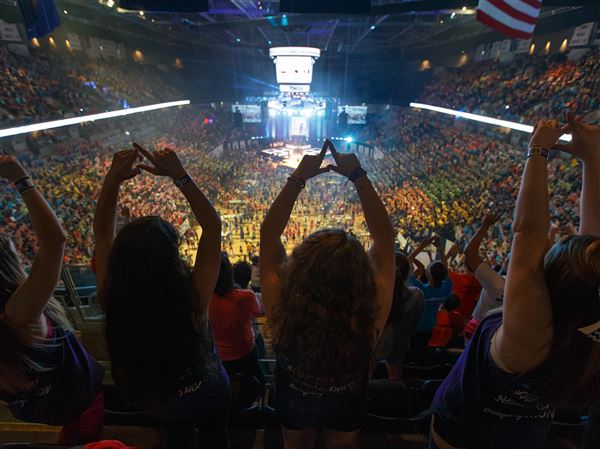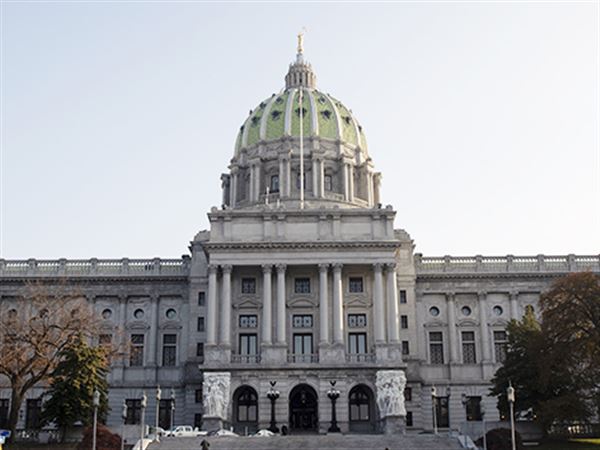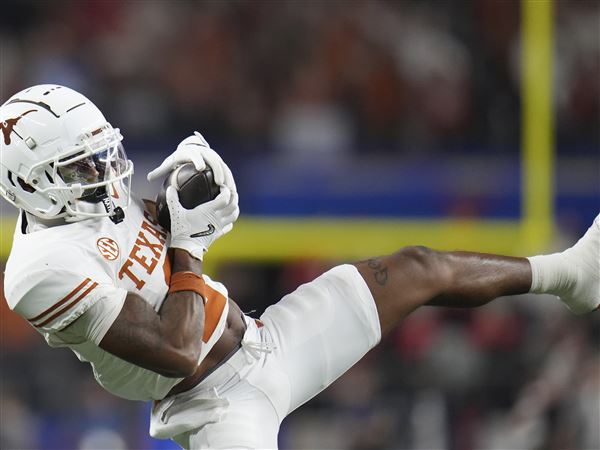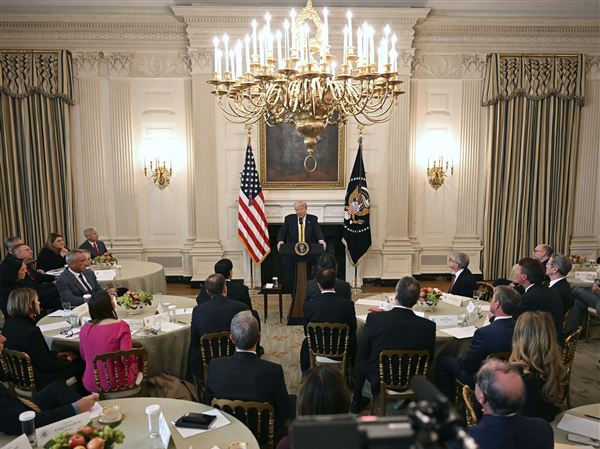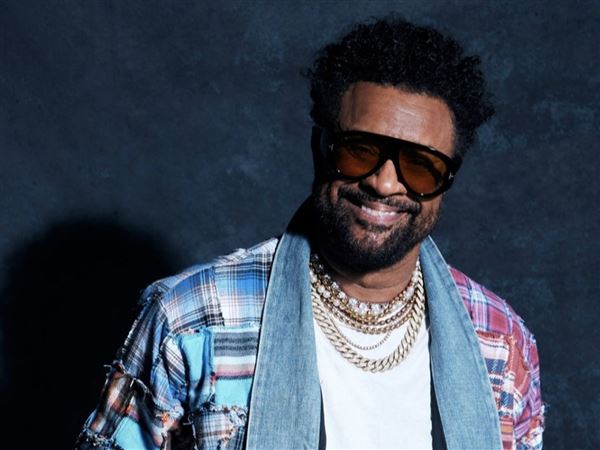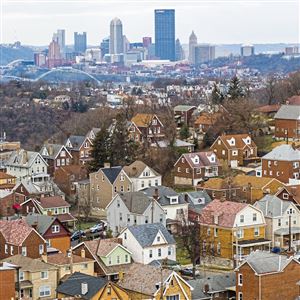When Frank Buckles died in February at his West Virginia home, his passing closed a chapter in the country's history.
He was the last American veteran of World War I, and his death drew the attention not only of friends and family but of historians, editorial writers, politicians and the president of the United States.
"He was like a cat with nine lives," photographer and filmmaker David DeJonge said of Mr. Buckles, who was 110. During his long, eventful life, Mr. Buckles was stricken by scarlet fever, which killed his older brother, recovered from the often deadly Spanish flu and was incapacitated by beriberi, a nutritional disorder caused by a lack of vitamin B1, or thiamin, in his diet. The beriberi resulted from the terrible rations he was given while a civilian prisoner of the Japanese during World War II.
More than 4.7 million Americans served in the armed forces during the nation's brief, but bloody, participation in World War I. Mr. Buckles, who had lived for more than 50 years on a farm outside Charles Town, W.Va., became the last American veteran standing after Florida resident Harry Landis died at age 108 in 2008. Both men were born in Missouri.
Mr. Buckles was buried at Arlington National Cemetery, outside Washington, D.C., after a viewing attended by President Barack Obama and Vice President Joe Biden. Such honors and attention are not unusual. Starting with veterans who fought in the Revolutionary War, Americans traditionally have paused to take note of the passing of the last participants in each of the nation's conflicts. Historians, government officials and families, however, do not always agree on who those final survivors have been.
The U.S. Department of Veterans Affairs keeps statistics on 42 million men and women who have served in the armed forces during all of America's conflicts. That information includes the names of those it identifies as the last veterans of lesser-known wars.
New Yorker Hiram Cronk, a shoemaker, was the last surviving veteran of the War of 1812 when he died in 1905. He is buried in Brooklyn.
Philadelphia-born Owen Thomas Edgar was the last veteran of the Mexican War of 1846-48. He had lived long enough to have swapped campaign stories with soldiers who fought in World War I. He died in Washington, D.C., in 1929.
Nathan Cook joined the U.S. Navy in 1901 as a cabin boy. He enlisted as the Spanish-American War was under way, and he eventually became the last American survivor of that conflict. A career Navy officer, he was 106 when he died in 1992 in Arizona. His obituary in The Seattle Times noted that his service had continued through World War II, when he commanded a submarine tender in the waters off Panama.
Lemuel Cook, who died May 20, 1866, likely was the last man to have fought in the American Revolution. Born in Connecticut sometime between 1759 and 1764, he spent most of his life as a farmer in Orleans County, west of Rochester, N.Y.
In 1864, a writer named Elias Brewster Hillard wrote a book called "Last Soldiers of the Revolution." It contained his interviews with seven veterans, all age 100 or older. Hillard was the grandfather of the poet-playwright Archibald MacLeish, who quoted his grandfather's book at length in a 1948 story he wrote for Life magazine about the last veterans of the American Revolution.
Hillard had talked to Cook at his farm.
Cook, a cavalryman with the Second Continental Light Dragoons, had described "the first time I smelt gunpowder." It was during a skirmish at Valentine's Hill, outside New York City, in 1776. After British horsemen fired two volleys at his squad, one of Cook's older comrades rode up and asked, "Lem, what do you think of gunpowder? Smell good to you?"
Cook must have liked the aroma. He told Hillard he stayed with George Washington's Continental Army through the end of the war, and he was present at Yorktown, Va., for the surrender of British Gen. Charles Cornwallis.
Cook recalled his commander-in-chief's sensitivity toward his defeated enemies. "Washington ordered that there should be no laughing at the British; [he] said it was bad enough to have to surrender without being insulted," the veteran remembered.
"The old man's talk is very fragmentary," Hillard wrote. "He recalls the past slowly, and with difficulty, but when he has his mind fixed upon it, it all seems to come up clear."
Still, Hillard found Cook an imposing figure. "His frame is large, and his presence commanding, and in his prime must have possessed prodigious strength."
When Hillard interviewed Cook in 1864, American's deadliest conflict, the Civil War, was still under way. No sooner did it end the following year than former soldiers, North and South, began to organize themselves into veterans organizations that held separate reunions and encampments.
Representatives of the two main groups -- the North's Grand Army of the Republic and the South's United Confederate Veterans -- came together, however, for "Blue and Gray" commemorations of key events. The most famous were at Gettysburg in 1913 and 1938. The later event marked the 75th anniversary of the battle, when surviving participants were in their 90s or already had hit 100.
Determining the identity of the last Confederate veteran has proved to be a sometimes controversial task. In the post-war South, many service records were destroyed, looted or discarded. As a result, a baker's dozen of Southern men, all of whom died in the 1950s, have been proposed as the last surviving Confederate veteran.
In December 1959, just 16 months before the 100th anniversary of the start of the Civil War, many newspapers, including the Post-Gazette, carried stories about the death in Texas of Walter Williams. Williams and his family had claimed that he had been a Confederate private, serving under both Gen. John Bell Hood and Capt. William Quantrill.
After Williams died on Dec. 19, President Dwight Eisenhower ordered that American flags be flown at half-staff until his funeral and burial four days later.
The Dec. 21 story in the Post-Gazette was carefully crafted. The writer waited until the eighth paragraph to give Williams' age of 117 and attributed the number to his family.
The newspaper was cautious, because three months earlier The Pittsburgh Press and other Scripps-Howard newspapers had run a front-page story concluding that Williams was "a Confederate veteran only in his memory-clouded mind."
Reporter Lowell K. Bridwell based his conclusions in part on 1860 census records indicating Williams had been born on a farm in Mississippi in 1855, making him an impressive 104 but too young to have served.
"Other than the sworn statements of Mr. Williams, no evidence was required to begin payment of Confederate pension benefits," a spokesman for the Texas veterans affairs commission told Bridwell. "No official records are available from any source that would verify the statement made by Mr. Williams."
Williams, however, has his defenders, including the Sons of Confederate Veterans, a successor organization to the United Confederate Veterans, known as the UCV.
Williams' claim to be a Confederate veteran had been accepted for many years before his death, and he had attended the UCV's last reunion in Norfolk in 1951, B. Frank Earnest said. As Commander of the Army of Northern Virginia, Mr. Earnest is one of the top officers of the Sons of Confederate Veterans.
Mr. Earnest doesn't put much faith in the 1860 census listing for a 5-year-old Walter Williams. "It's a pretty common name," he said. "It's likely there was more than one Walter Williams."
Finally, if the last Confederate veteran wasn't Walter Williams, Mr. Earnest said a good alternate choice is John Salling, a Virginian. Salling, who died March 16, 1958, has been identified by the U.S. Department of Veterans Affairs as the last Confederate.
"But it's true that because of incomplete and lost records, there always will be disputes over who was the last veteran," Mr. Earnest said.
Based on his own research, historian William Marvel has another candidate. For a 1991 story for the Civil War magazine "Blue & Gray," he studied documentary evidence for 13 elderly men who had claimed to be the last Confederate veterans.
After Mr. Marvel eliminated all those for whom there was no proof of service or who were found to have been born later than they claimed, his remaining possibility was an Alabama soldier named Pleasant Riggs Crump. Crump's death on New Year's Eve 1951 drew little attention, however, because so many other men were claiming to have served in the Confederate armies.
"He was the last of the Rebs, but no one knew it at the time," Mr. Marvel said. An independent historian who lives in New Hampshire, Mr. Marvel is working on his 15th book about the Civil War era: a biography of Edwin Stanton, Lincoln's secretary of war.
Crump had joined the 10th Alabama Infantry in 1864. He and his unit had helped defend Petersburg, Va., during the last year of the war. He was a witness to Confederate Gen. Robert E. Lee's surrender to Ulysses S. Grant at Appomattox Courthouse in April 1865.
The creation of the modern federal bureaucracy resulted in large part from the government's need to keep track of the service records and pension payments for more than 2 million Union veterans. That extensive record-keeping assured there was no dispute over who was the last Northern soldier to pass on after Albert Woolson died Aug. 2, 1956.
And if Mr. Marvel is correct that Pleasant Riggs Crump was the last Confederate, Woolson would have been the last surviving soldier from either side.
His obituary in the Aug. 3, 1956, edition of the Post-Gazette listed his age as 109, but Mr. Marvel said subsequent research into census records indicated that he added a year to his age and was a mere 108 at the time of his death.
Most likely born in 1848, he was 16 when he joined Company C of the 1st Minnesota Heavy Artillery Regiment in October 1864. He served as the company drummer until he was discharged in September 1865, when he returned to Minnesota.
After the war, he became an officer in the Grand Army of the Republic, known as the GAR. At its peak, the Union veterans organization had almost a half million members.
"THE OBITUARY notice of the Grand Army of the Republic was written yesterday ... with the passing of its last survivor, Albert Woolson," Associated Press staff writer Robert Price reported Aug. 3 in the Post-Gazette.
"The last of the Civil War's Boys in Blue was 'scared to death' the first time he fired a cannon," the writer of Woolson's obituary said. He got that opportunity as his colonel prepared for a rumored attack by Confederates under Gen. John Bell Hood outside Chattanooga, Tenn. The officer handed Woolson the end of cannon lanyard, a length of rope used to set off the artillery piece. The young drummer boy received only limited instructions. The officer told him, "When I yell, you stand on your toes, open your mouth and pull ... ."
The resulting explosion and accompanying concussion were terrifying, Woolson recalled during an interview before his death.
"The old vet's birthdays in recent years became civic celebrations," according to the newspaper. "Hundreds gathered in front of his home in subzero weather on the night of his 107th birthday [Feb. 11] to sing 'Happy Birthday.' "
President Eisenhower marked Woolson's death with a statement noting that "The American people have lost the last personal link with the Union army."
Woolson died at a time when many white Americans had come to see the Civil War as an unfortunate disagreement between two groups holding equally defensible positions. Eisenhower's comment reflects that attitude. "His passing brings sorrow to the hearts of all of us who cherished the memory of the brave men on both sides of the War Between the States," the president wrote.
His service as an ambulance driver on the Western Front during World War I had not satisfied Mr. Buckles' need for adventure. During the 1930s he worked as a purser on cargo and passenger ships and traveled to South America, Europe and Asia. His ship was in the Philippines in December 1941 when the Japanese attacked, and he spent more than three years as their prisoner during World War II.
How did he survive? "He ate whatever food they gave him," Mr. Buckles' longtime friend, Charles Printz, 95, said. "It didn't matter if there were grasshoppers or other bugs mixed in with the rice. He ate it."
He returned to the United States after the war and married. He and his late wife, Audrey, bought a farm outside Charles Town, W. Va., where they raised their daughter, Susannah.
Mr. Buckles was an active member of several historical organizations, including the Sons of the American Revolution and the Jefferson County Historical Society.
Mr. Printz recalled that he and Mr. Buckles also had done some amateur dramatics together. Charles Town, named for a brother of George Washington, may be best known as the place where abolitionist John Brown was tried and hanged in 1859. Brown was convicted of treason after he sought to ignite a slave revolt at nearby Harper's Ferry.
Sometime in the 1960s Mr. Buckles and Mr. Printz appeared in a production of "The Anvil," a play by Julia Davis about Brown's trial and execution. Noting the 15-year age gap between them, Mr. Printz said, "I liked that he always thought of me as a younger man."
Until his last days, Mr. Buckles remained active in efforts to restore and convert a Washington, D.C., monument, which honored local veterans, into one remembering the service of all veterans of World War I, Mr. DeJonge said. The monument is located on the National Mall, not far from the Korean and World War II memorials.
"There were some lessons he learned at an early age," Mr. DeJonge said. "Keep moving and have an optimistic attitude." Mr. DeJonge is preparing a documentary film and the first biography of Mr. Buckles.
A few years after his military service, Mr. Buckles had an opportunity to meet Gen. John "Black Jack" Pershing, family friend Hugh Voress recalled. Pershing had led U.S. forces in Europe during World War I.
In 2006, Mr. Buckles paid a visit to Pershing's grave in Arlington National Cemetery.
On March 15, Mr. Buckles was buried on a knoll near his old commander.
More information on efforts to restore the Washington, D.C., World War I memorial and on David DeJonge documentary about Frank Buckles, "Pershing's Last Patriot," is available at the website www.frankbuckles.org.
First Published: May 29, 2011, 8:00 a.m.

